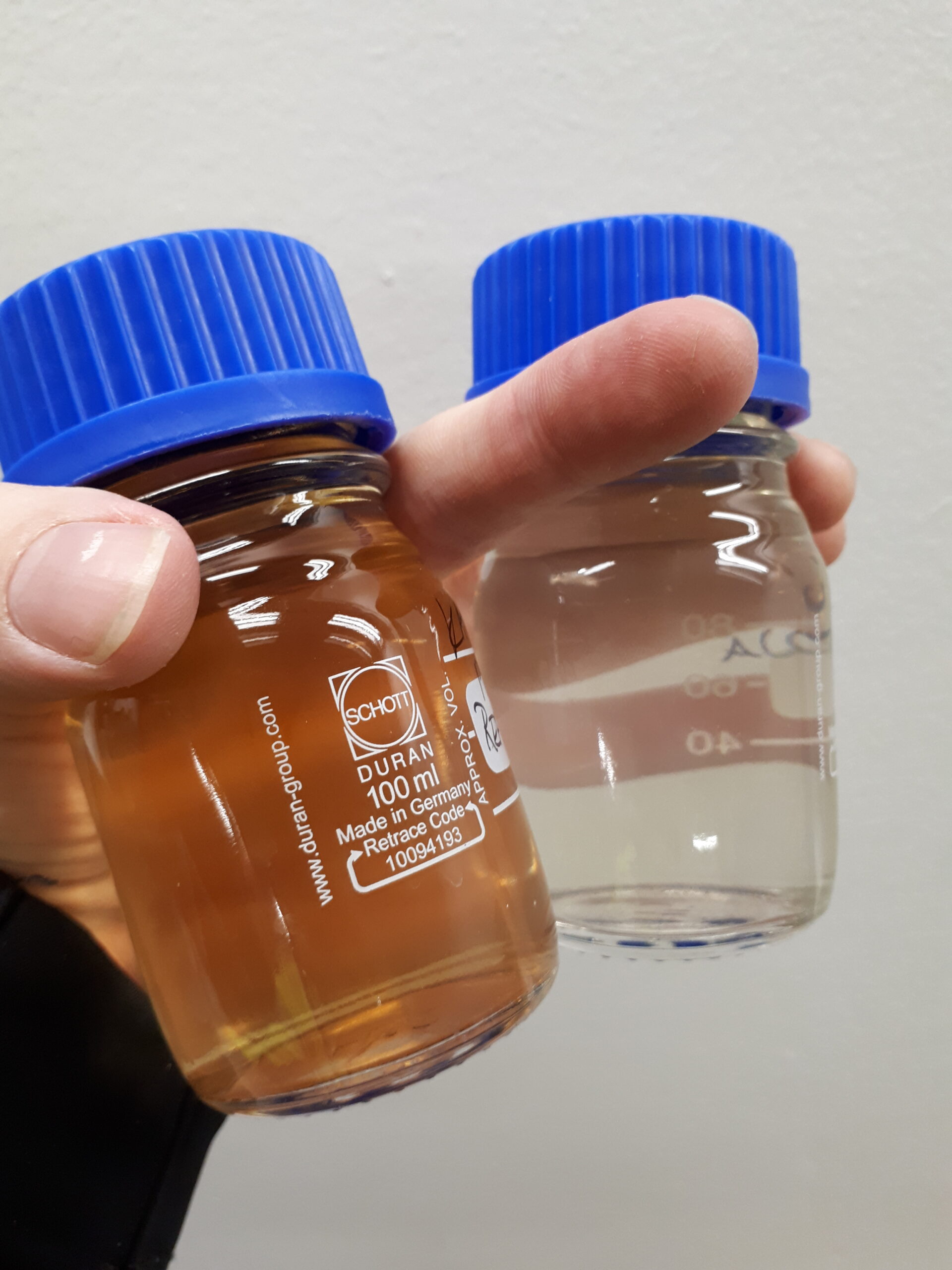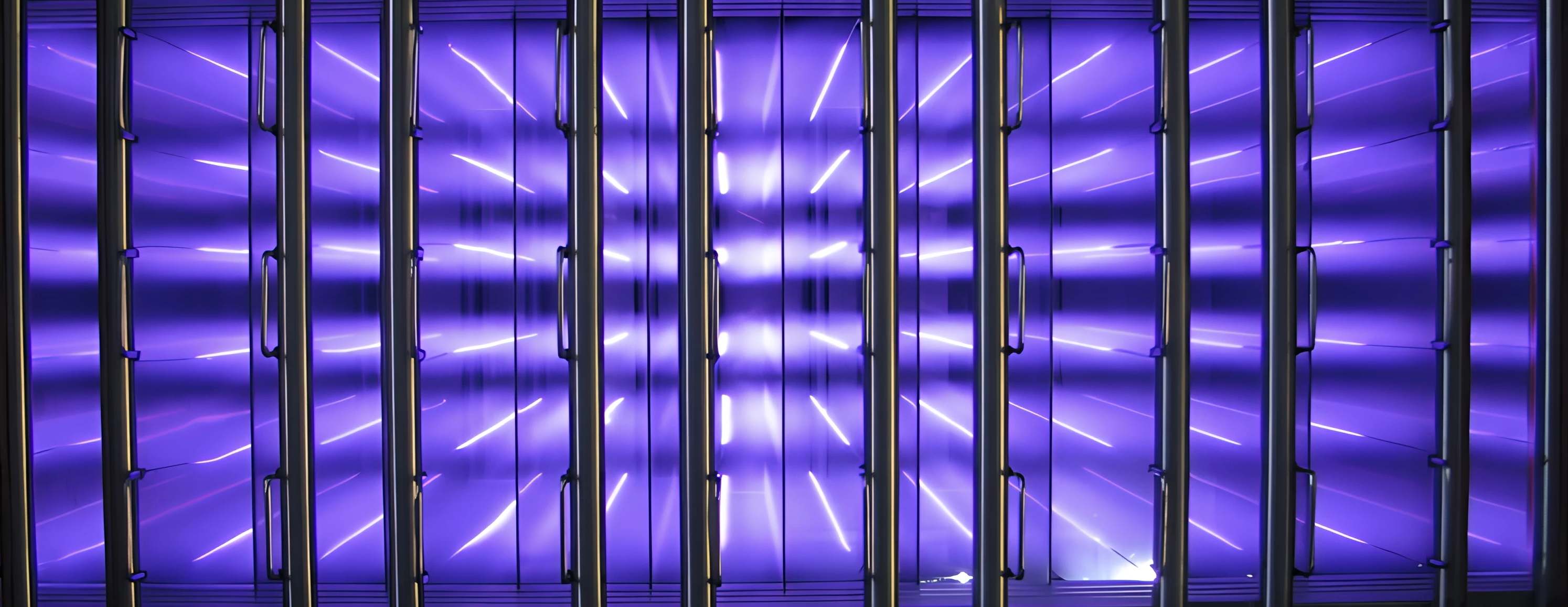Organic contaminants in water
Organic contaminants make a wide range of biochemically active and harmful pollutants that can end up in used waters and aquatic environments. Many chemical residues can affect health and the environment even in trace concentrations. Some are even prone to accumulation due to poor biodegradability (a popular term is POP, persistent organic pollutants). That is why eliminating organic pollutants from water should be practiced on all levels and especially at a common source: industrial waters.
Organic pollutant examples are:
- Dyes
- Phenolics
- Biocides
- Pharmaceuticals
- Pahs
- Surfactant chemicals
- Oily residues

Benefits of VuOxi Plasma Oxidation
- Minimal energy
Purification with low energy consumption for cost-effective operations.
- Chemical-free
No chemicals to store, handle, or dose; only electricity is needed.
- Low maintenance
With no moving or wearing parts, maintenance is only needed occasionally—keeping downtime and costs to a minimum.
Why is removing organic pollutants a challenge?
For industrial operators, residues of chemicals in used waters can be a stressful problem. Removal of dissolved organic pollutants is often challenging. At the same time, their maximum allowed emission levels are frequently regulated by legislative bodies and environmental authorities. Exceeding emission levels likely results in environmental problems and costly penalties.
Water pretreatment before discharge is often mandatory. Why? Because one of the conventional water treatment methods is treating water with chemicals. Used chemicals and processes often do not have an environmentally friendlier alternative. Therefore, a water pre-treatment needs to be installed.
The list of emerging contaminants is continuously expanding, and regional regulation is getting stricter by the day. Environmentally aware process design is encouraged, but more and more contaminants and their effects keep emerging. It is challenging to keep up the pace. The result is that we need more and more advanced end-of-pipe solutions as we keep learning, which often occurs in higher costs.
Eliminate Organic Pollutants with VuOxi Solutions. The typical degradation pathway of organic contaminants in nature is gradual oxidation. VuOxi solution employs non-thermal plasma to generate more than enough strong oxidants that destroy organic molecules in an accelerated, natural manner.
Minimal energy input, maximum efficiency output
The point of non-thermal plasma in water treatment is to use minimal energy. Using only electricity, VuOxi Plasma Oxidizer synthetically creates the same oxidizing species that are most effective in natural processes. This powerful water purification technology uses ambient oxygen and the treated water itself as the source of these oxidants. The primary oxidants thus produced are hydroxyl radicals (OH) and ozone (O3). Processes using hydroxyl radicals for water purification are collectively referred to as advanced oxidation processes (AOPs).

One-of-a-kind industrial water treatment
We have brought plasma oxidation to a commercially available, industrial scale. Our plasma technology comes with low maintenance requirements and a high level of automation. VuOxi Plasma Oxidizer is characteristic with:V
- High energy efficiency in hydroxyl radical formation
- Very high plasma-water contact surface area
- Reactor design is robust with no moving parts
- Plasma electrodes are not consumed by the process

Strong oxidants kill organic pollutants
In contact with water, the high-speed electrons in non-thermal plasma enable the formation of OH-radicals and ozone according to the following equations:
| RECURSORS | PRODUCTS |
| H2O + e- | OH + H + e- |
| O2 + e- | O + O + e- |
| O + O2 + M | O3 + M |
The atomic hydrogen as a product of the first equation is prone to reacting with molecular oxygen (O2), yielding hydroperoxyl radicals (HO2) which are also oxidants.
OH-radicals and ozone are very strong oxidants. This means that they can oxidize harmful organic pollutants. Oxidation of organics in its ultimate extent results in mineralization to carbon dioxide. Usually, complete mineralization is, however, not a requirement, allowing optimization of energy input.
In VuOxi Plasma Oxidizer, the water falls like rain through a large plasma volume. This enables constant flux of abundant radical oxidants that effectively destroy organic contaminants, such as pharmaceuticals, biocides, surfactants and residual active reagents.
Various reactive oxygen species are present in plasma liquid contact. The most important ones are hydroxyl radical and ozone.
VuOxi Plasma Oxidizer is a superb alternative to ozone, UV and chemical water treatment.
Industry applications for plasma technology
Plasma technology as a novel solution has been tested for successful degradation of dozens of pollutants from the following industries:
- Food production
- Food processing
- Agriculture
- Pharmaceutical industry
- Mining
- Other chemical manufacturing industrie

The best solution for your process?
We expand this database with continuous testing. To find the best solutions for your process, we also offer trials for waters with challenging organic contaminants. If you are interested in a trial, contact our experts.
Contact us
The VuOxi team is dedicated to restoring water to its most natural, pure state, free from contaminants and impurities.
Let us help you to secure your water and your future.
